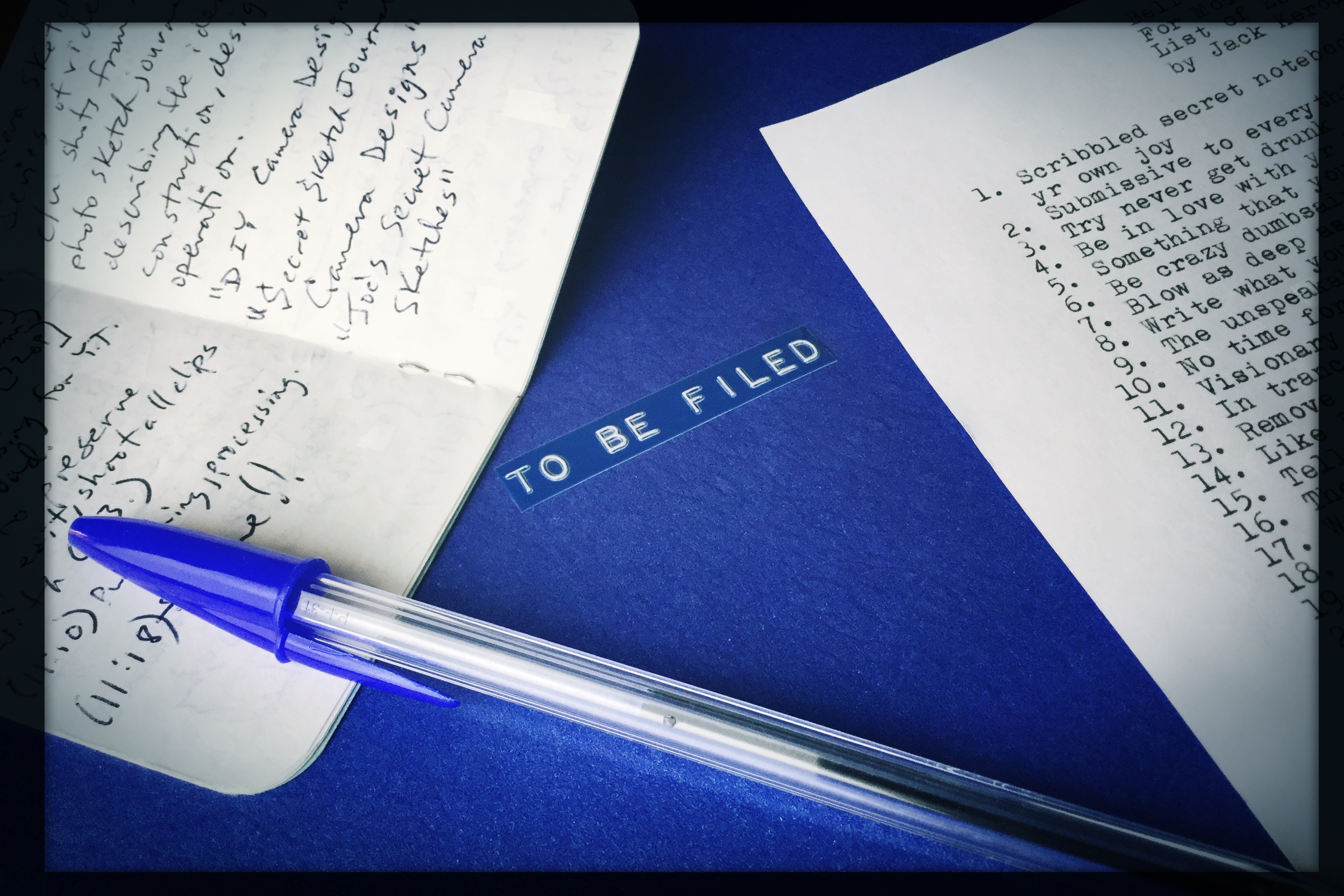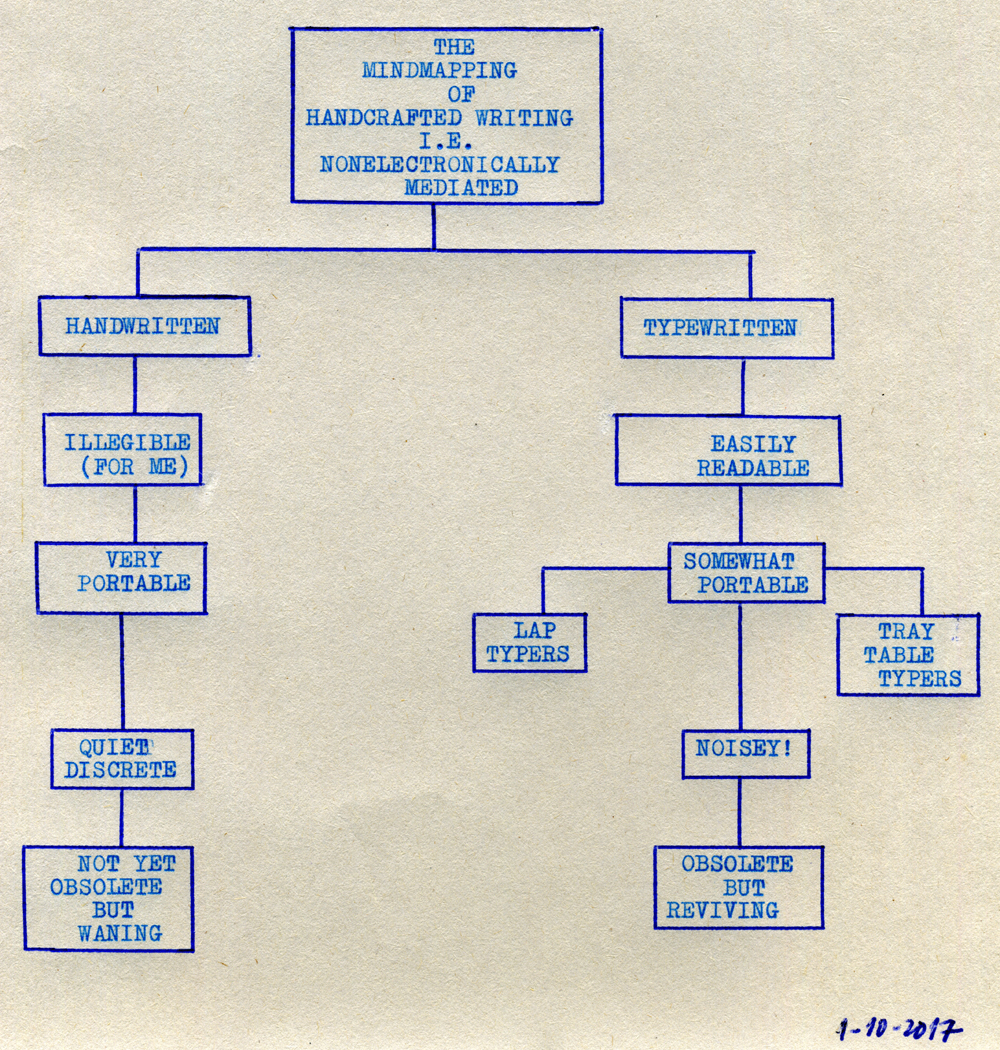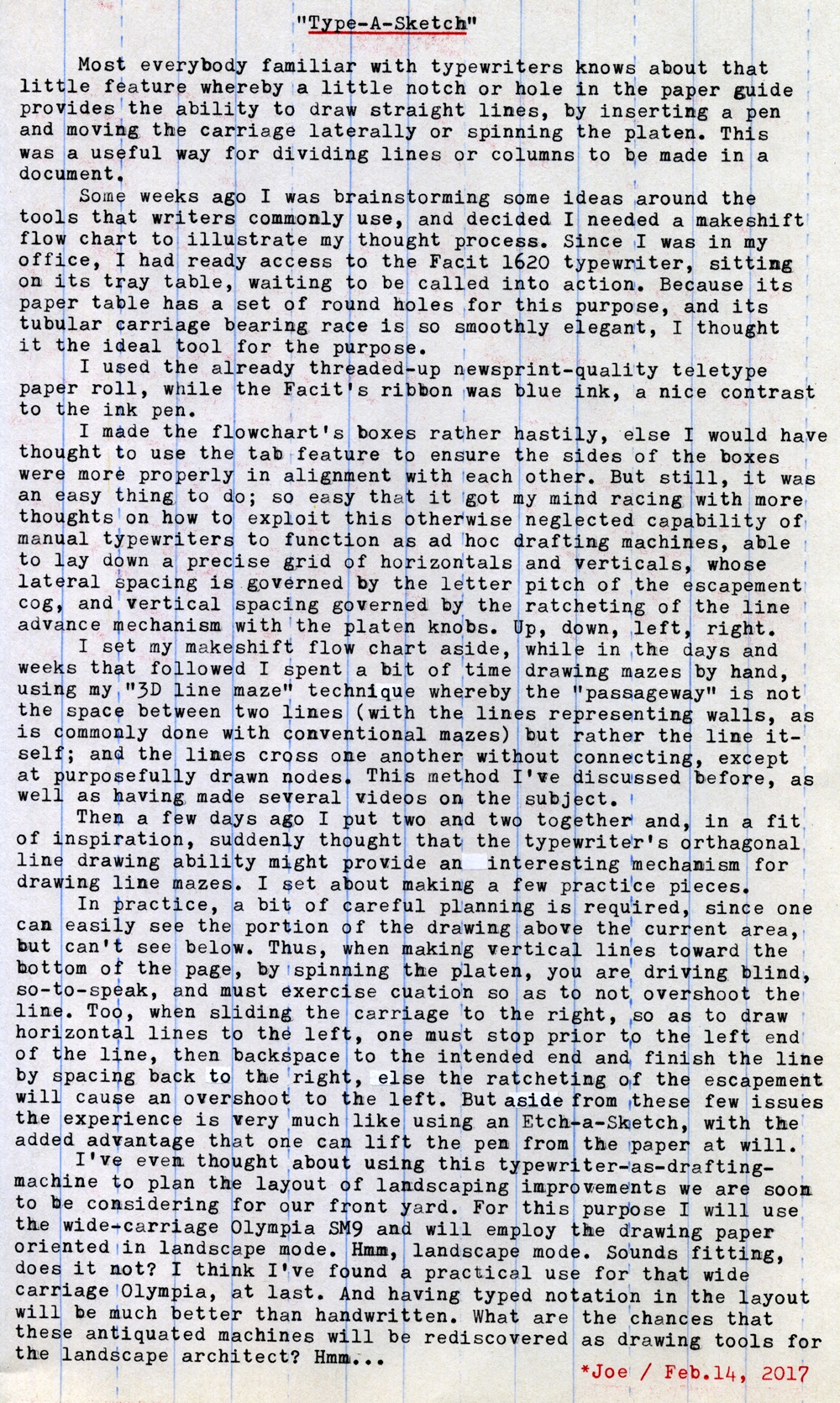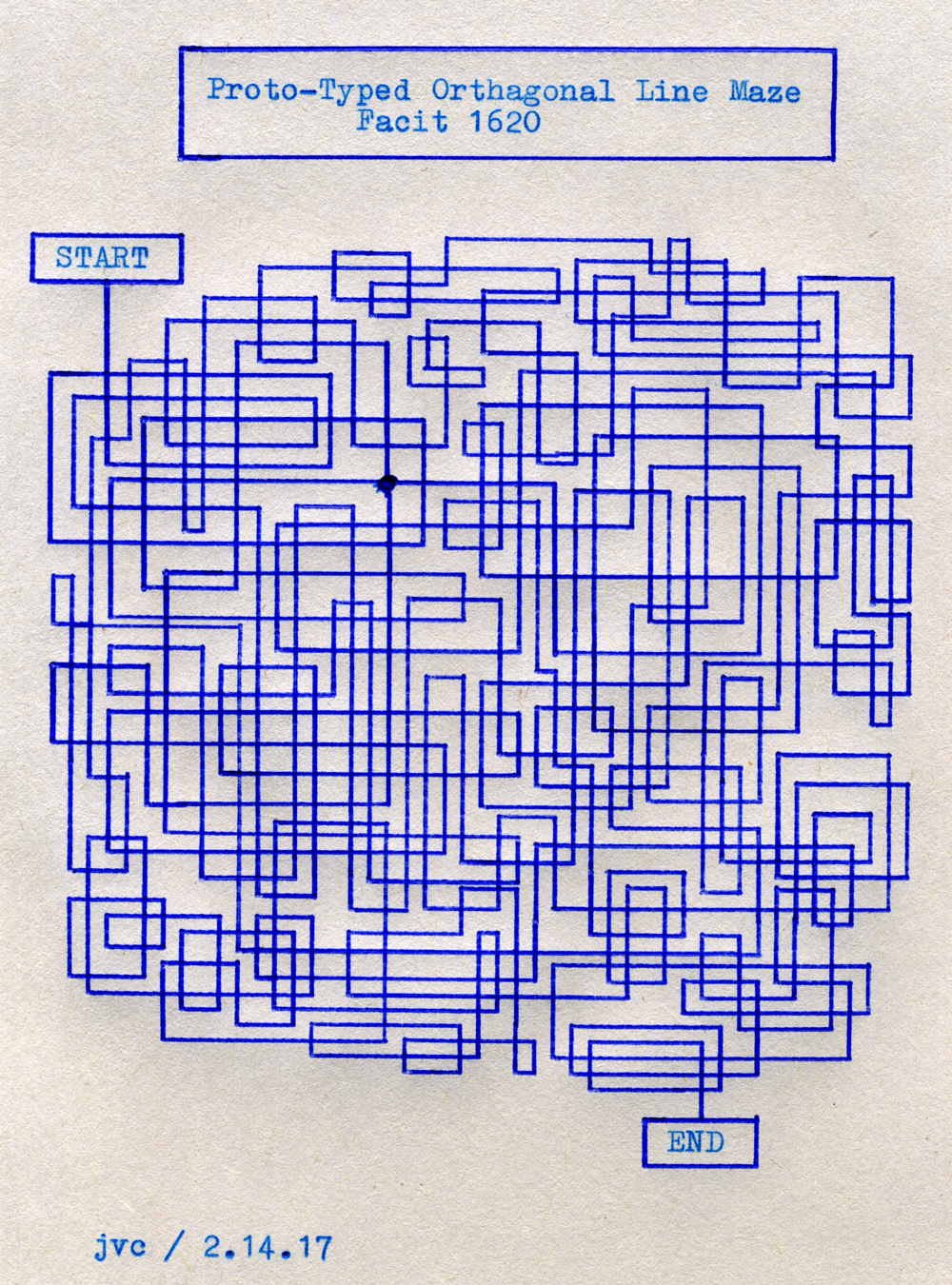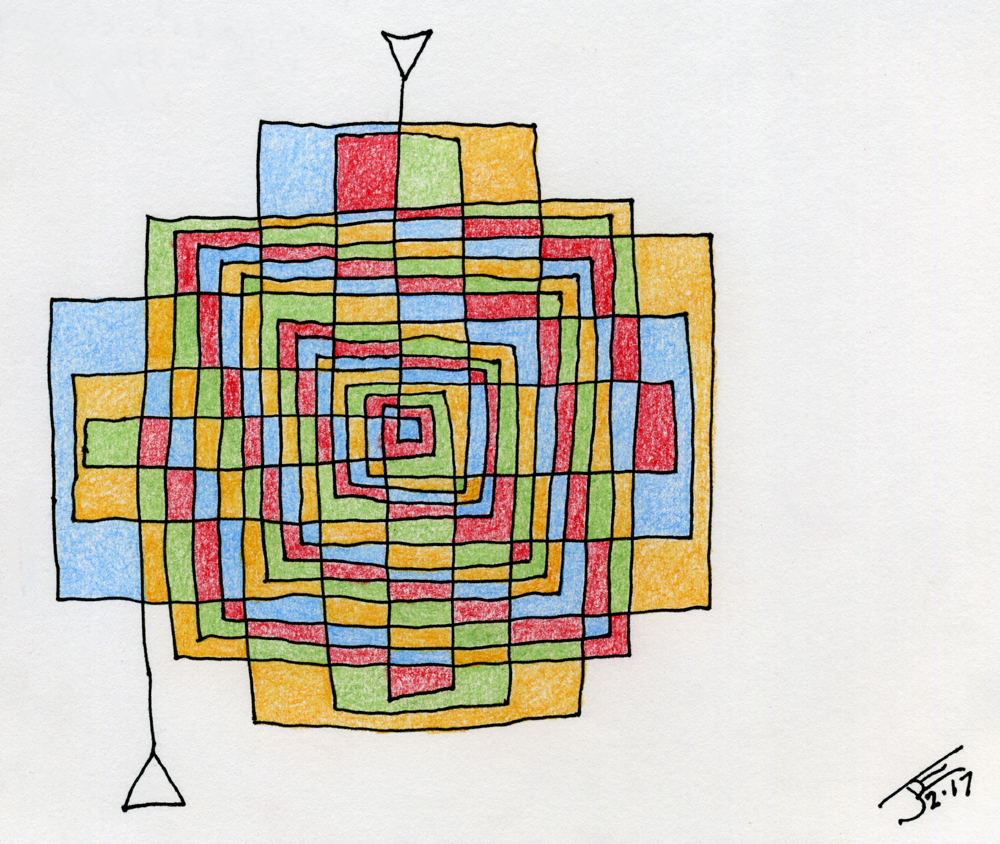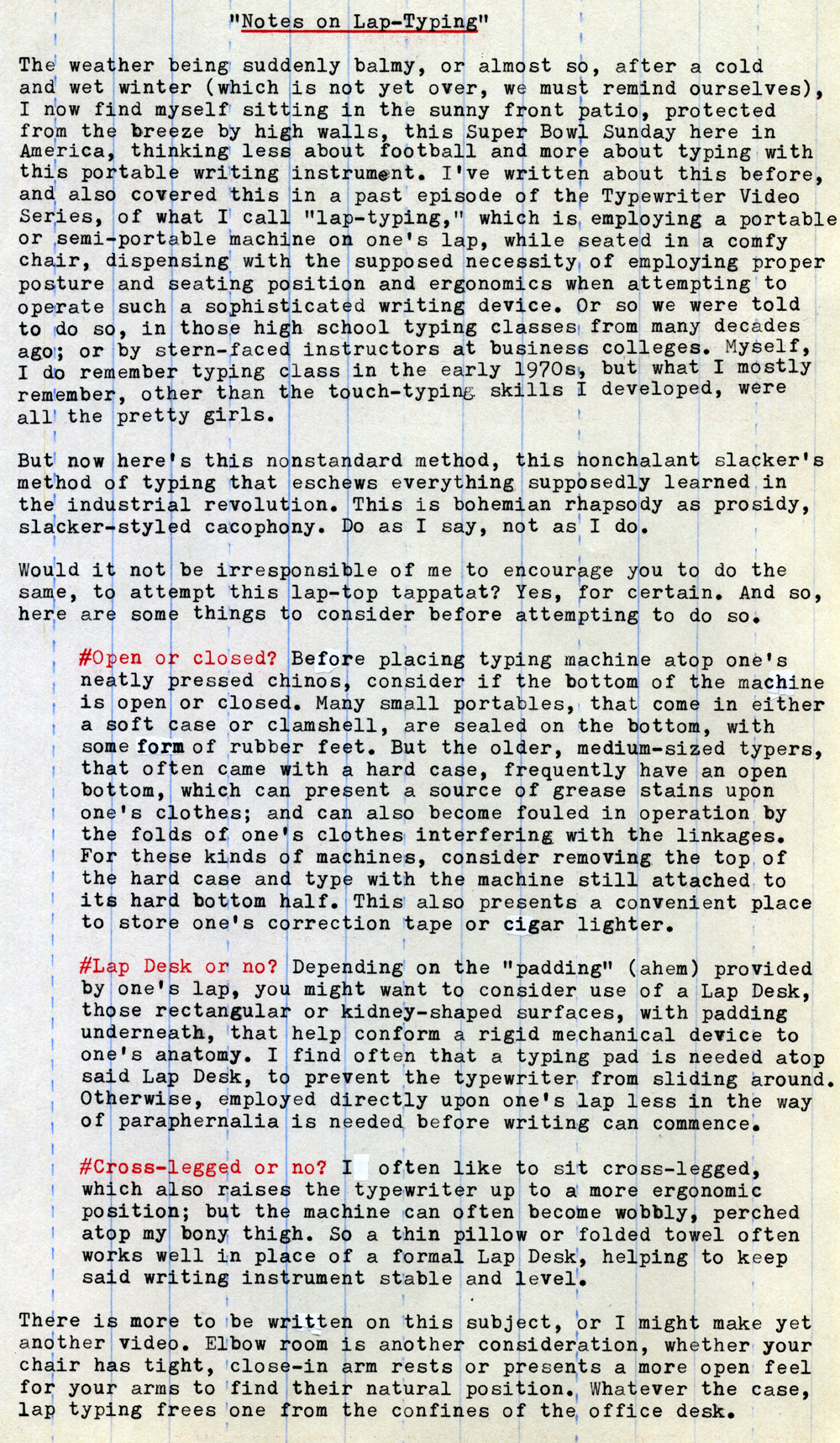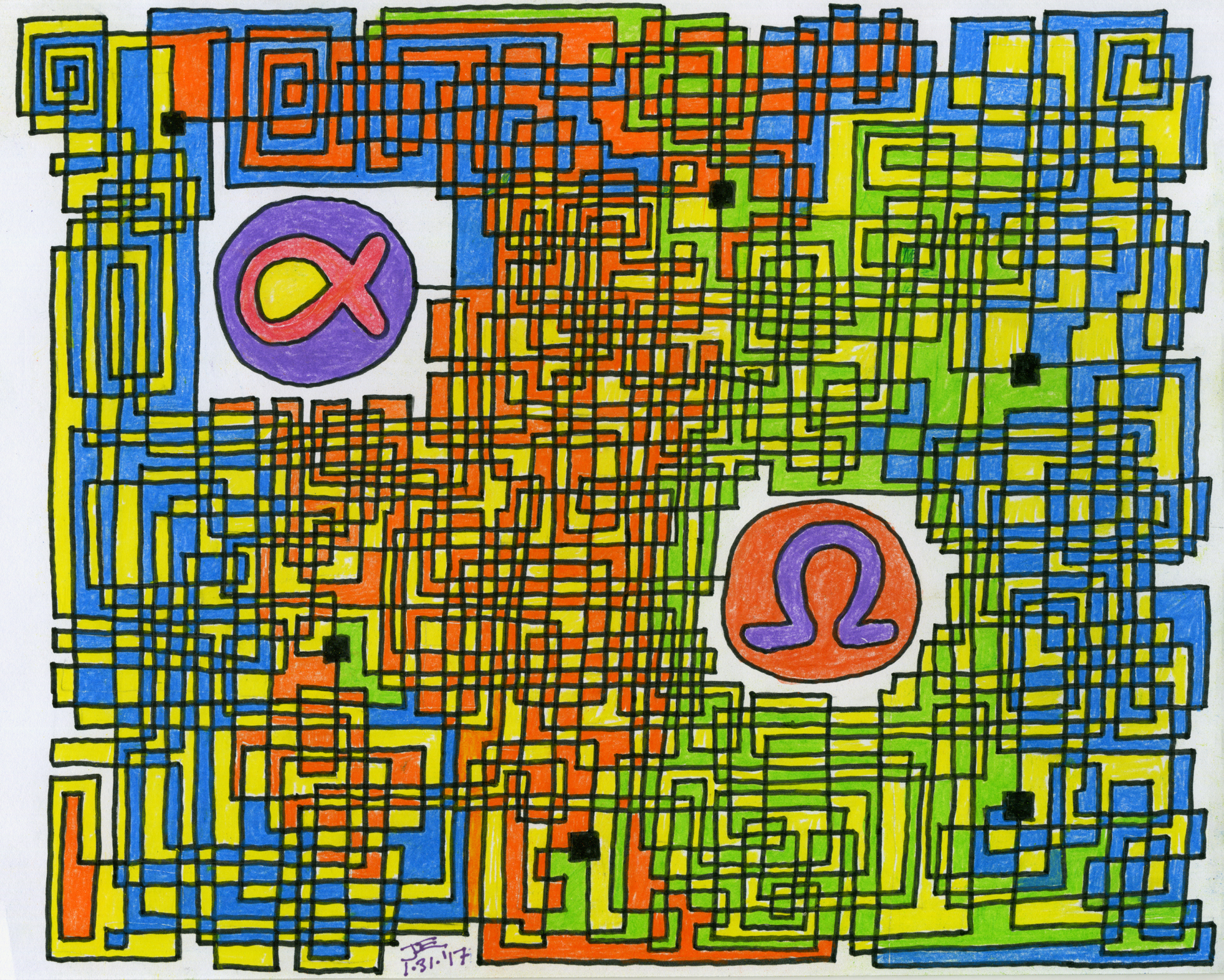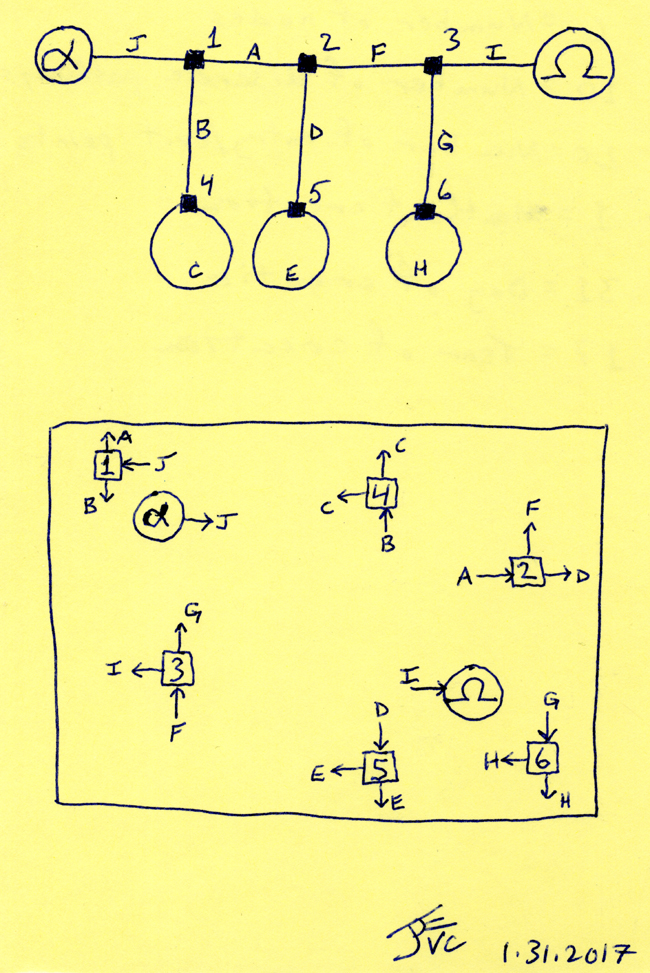On the Other Side of the Lens
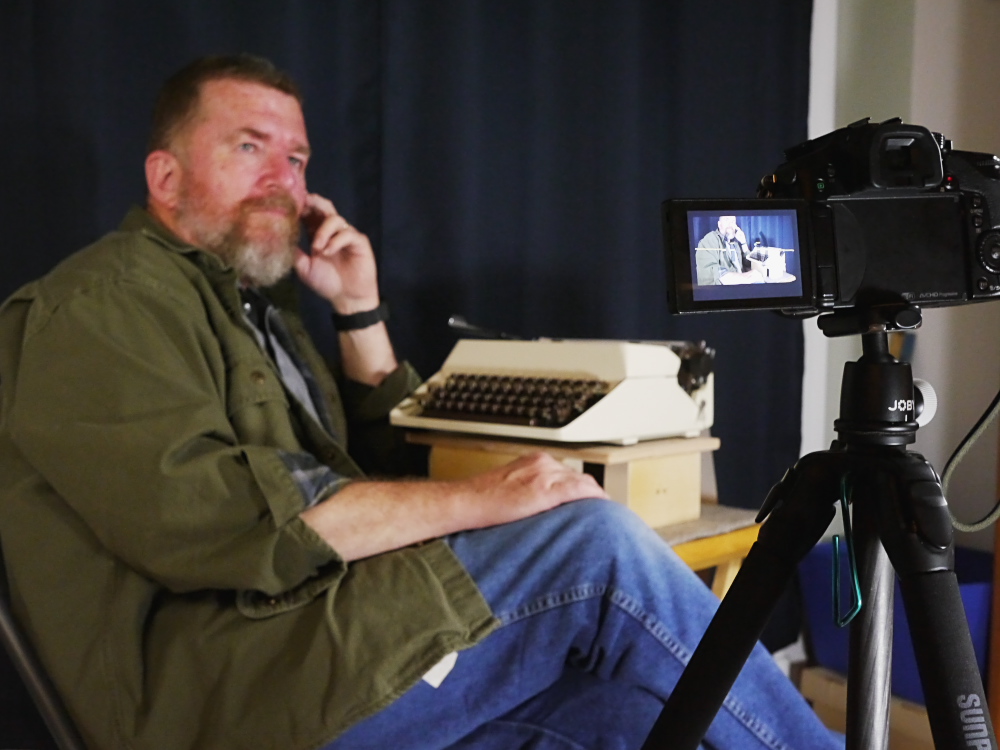
I have a couple of typewriter-related things to share with you today. The first concerns my seemingly perpetual and tenuous planning for what I hope to be the first ever ABQ Type-In. Since I first had an inkling about planning such an event, late last year, it seems I've dragged my feet, not quite knowing how to go about planning such an event. I needed to decide on a date, time and venue, while also needing some idea about how many people might be expected to show up with typewriters, which dictates the size of the venue.
So earlier this year I put together a simple flier, soliciting interest in attendance, and posted it around town, hoping for the best. I've thus far received about a half-dozen replies to the affirmative.
I also created a gmail account for this project (abq.type.in@gmail.com), through which I put together an informational email packet about Type-Ins, to be sent in reply to any respondent to my fliers.
The biggest hurdle has been finding a suitable venue. I've visualized the event as taking place on a Sunday afternoon at a public place with food and drink, the kind conducive to creatives and the general public alike. I needed it to have some separate meeting room big enough for a sizable turnout (not knowing how many people might show up), yet able to attract people who might just wander in for lunch.
Initially I had limited my search to the area of Nob Hill and UNM, the part of town where one might expect to find creative peoples in mass, but I widened my search after realizing that the ongoing reconstruction of Central Avenue, due to the ongoing Albuquerque Rapid Transit project/fiasco, would hamper access and parking. I also wanted to avoid the time when the NCAA basketball tournament is being televised, while also wanting to avoid Good Friday and Easter weekends.
Then this last weekend I had lunch at Nexus Brewery, in north-central Albuquerque near I-25 and Montgomery, and discovered they have a suitable meeting room, a great selection of award-winning brews, and a good food menu, including the ever-popular chicken and waffles. So today I called their business office and was able to confirm a date and time, that being Sunday, April 23 starting at 1 PM.
I'm excited that this major hurdle has been passed. Now I have to wait on my graphic designer to finish the poster and fliers, and to get some media attention. I'm not a publicist by nature, so this is all new territory for me.
The second typewriter-related item to share with you is that last week I spent several hours at my home being interviewed by an Associated Press reporter for a story about the typewriter revival. He had found me through one of my fliers left at John Lewis's Mechanical Antique typewriter repair shop; where he was having one of his two typewriters serviced. I won't know for several weeks how the story ends up, or in what venue it will be published. During the interview we spent considerable time discussing my background and how I came into typewriters, and why I like and use them. He also was shooting video during this time, much more than taking notes (in a Staples-branded reporters notebook, for those of you office supply geeks). I don't know if the video will be used in some footage online, or if he uses the camera as an alternative note-taking device.
This week I got back to making another episode of my "Confessions of an Office Supply Junkie" series, this being about handmade letter envelopes. Since I'm engaged in several pen-pal correspondences, I use envelopes and preprinted address labels every week. I got to thinking that if I could make my own envelopes I could preprint the addresses via laser printer and dispense with the cost of labels. I ended up with a novel design that is folded from a standard letter-size 8.5"-by-11" sheet of paper, uses only two small cuts and is taped shut for closure. It ended up being just a bit larger than the so-called "6-3/4" small letter envelope size. I did a cost comparison, using for prices the Staples brand of copier paper and premanufactured envelopes. The paper is about 1 cent per sheet, while a premade envelope is around 6 cents per. Of course, the cost of a few inches of adhesive tape also has to be factored in; but it is still less expensive for this homemade version, even though it looks a bit novel in design (the term "novel" being a more polite alternative to "weird").
Speaking of YouTube videos, while I'm nowhere near being a heavyweight in the YouTube arena, I was heartened to see the Samsung commercial at the beginning of last Sunday night's Academy Awards telecast, featuring YouTube star Casey Neistat, who played himself giving a mock awards presentation in a dark, rainy, empty parking lot (implying the huge gap between established Hollywood personalities and us small-time YouTubers). His short speech honored all of us unknowns who follow our dreams of creativity through video production; unlikely to be walking down any red carpets in designer clothes anytime soon. Of course, it was a Samsung advertisement about mobile phone tech, we must remind ourselves - ultimately for commercial purposes, but I felt heartened by it anyway.
I'll keep you informed of any further developments pertaining to the upcoming ABQ Type-In. Happy typing and envelope-making.
Post-Script: Here's my video on handmade letter envelopes:
Here's a link to the Samsung commercial about us YouTubers:
Here's the link to Nexus Brewery's website.
Final thought: The lead photo in this post has me posed in front of my video camera setup (Lumix GH3), adjacent to the Facit 1620 typewriter. Even though the focus of the shot was intentionally directed at the screen of the GH3, with the background left soft, you might be able to tell that the Facit is sitting propped up on some kind of wooden platform upon a folding tray table . This was a cobbled-together contraption to get the typewriter at a more ergonomic position while seated in my office chair, whose height I didn't want to keep adjusting between my main desk, which is higher, and the tray table, which is lower. The platform is very stable, and the newer typing position is much more conducive to extended typing. This post's first-draft was composed using the new setup onto the roll of teletype paper. I would have made it a typecast, but I didn't want to interrupt my stream-of-consciousness typing with correcting my numerous typos; and I'm too self-conscious to post that messy of a typed sheet.
Labels: ABQ Type-In, Facit 1620, typewriter renaissance, Typewriter video series, You Tube
